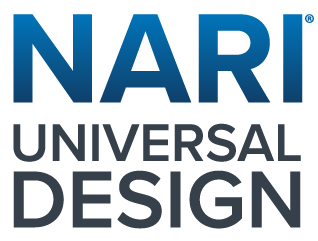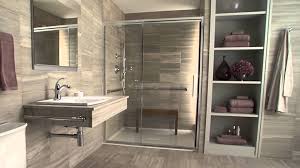T-Square Company has been successfully remodeling kitchens and bathrooms in Austin for over 30 years. So just what is involved with kitchen upgrades and bathroom remodeling in Austin, Texas while Austin homeowners are constantly looking for ways to bring their existing older home's kitchens and bathrooms up to date? Bathroom remodels for any smaller baths can incorporate a number of items to fit any budget. Larger kitchens and bathrooms lend themselves to more extravagant designs. Using beautiful stone or ceramic tiles in an interesting design, installing new plumbing fixtures, upgrading the cabinet tops and the use of neutral colors can create a kitchen or bathroom with a "wow" factor. It is quite possible to produce a small but charmingly remodeled kitchen or bath on a budget. A project that is affordable plus the fact that it will add resale value to your home cannot be denied. Check out all the options before committing to a plan and then stick to it. The replacement of for instance the tub with a new walk in shower can create a bold look but will run you around $10,000 in the bath. An Austin kitchen remodel for two hundred square feet will begin at around $50,000. There are no spending limits for bathroom upgrades. You can plan on spending around $12,000 to $15,000 for a hall bath remodel. The price tag can approach or exceed $35,000 for a complete master suite remodel. The type of fixtures and building components chosen along with the labor will compose the overall cost of the remodeling project. Always hire a local and professional builder. Remember that producing change orders because "no one thought of that" become expensive. Create the style for your Austin kitchen or bathroom remodel that best gives you a feeling of pride!
Accessible bathrooms incorporating aging in place design today contain stylish vanities set at a universal height of 34 inches with clear knee spaces. The sink faucets are easily controlled by either wrist handles or levers. Toilets are available in comfort heights eliminating the deep knee bend needed for seating. Toilet seats are available with a heat feature and some have the ability to self close or have a night light. Curbless roll in showers are advised for everyone undergoing a bathroom accessibility remodel. The shower should contain at least a shower wand on a sliding bar for varying heights of use along with a regular shower head and control if desired. Folding seats are useful if caretakers are ever involved. Grab bars around the bath and especially in the shower should be used while non slip floor covering should always be considered.
If you have been considering a fine bathroom makeover or bathroom transformation in Austin there are a few things you should take into consideration. Bathroom upgrades in Austin, Texas can take on many looks and facets. The scope of work you choose to accomplish this task should effectively solve your problems and most importantly, your needs as the home owner-- for now and for the future. The identification of these specific needs belongs to you the home owner. The way your home is structurally altered to accomplish these needs is the job of the professional remodeling contractor. Aging in place and accessibility should be a concern no matter what your age. If your concerns are not for you, barring any life changing accident, they could concern the accessibility of another generation's independence is using the bathroom. A CAPS professional in the remodeling industry can help with solutions in solving these issues while performing design/build home modifications. T-Square Company is a nationally registered CAPS remodeling contractor.
When you are replacing your old cabinets during a kitchen remodel with some new fine cabinetry or perhaps you are just needing an updated work surface there are a few choices that need to be considered before making your final decision. Plastic laminates, solid surface material, granite, quartz, stainless steel, wood, and concrete are the most popular choices today when considering new or replacement counter tops for a fine kitchen upgrade. Each surface has it's own set of pros and cons to take under advisement before a conclusion is reached making sure your selection blends with your lifestyle. Remember that any samples of materials you see are only small representations of any larger piece when choosing products. Furthermore trivets and cutting boards should always be used no matter which top you choose. Kitchen remodeling in Austin, Texas is no different than anywhere else in the country. Kitchen upgrades and bathroom remodels return the most money at resale on the initial investment of the remodeling project. National averages show that kitchen remodels recoup around 70% of the costs of the upgrade at the time of resale. However, your kitchen remodeling costs should never exceed 15% of the total value of your home. Here is where you need to get your thinking cap on and plan for an affordable budget that is within your means. Your material choices are very important and if you need to stay mid-level to fit the budget then do so. The labor involved for the project will be around 1.6 times the cost of the materials used. The total budget should allow $100 per square foot for your kitchen upgrade project.
Finding help to remodel a home can be time consuming and should be undertaken only by those builders possessing a wide array of remodeling experience. All builders certainly are not remodeling contractors. The finale of new construction is by far more foreseen because of the known and predictable path the work schedule will follow. During remodeling, first there is the demolition work and the costs involved to dismantle a certain existing area in your home prior to beginning the construction of a new project. Knowing the best way to accomplish this aspect is why you need to hire a remodeling contractor. This type of building professional will base his results on his capability of blending any new work done within the home with the existing design and elevations. The expenses of this new construction represent the second set of costs involved for any residential remodeling project.
Along with Aging in Place, Universal Design is becoming more of a household term when it comes to a kitchen or bathroom remodel. Essentially, it’s about building or modifying places and spaces—both public and private—to accommodate people of all ages and abilities. More than just an architectural concept, universal design is a win-win for sandwich generation boomers caring for aging parents and their children at home, for grandparents raising grandchildren and great-grandchildren, and for all who are facing the challenges of caring for a loved one with Alzheimer’s or other chronic diseases.
Whether your family needs the support now or down the road, universal design features are a good long-term investment for the home itself.
Whatever your situation please remember to rely on the experiences of a local building professional. Check out their credentials and references and don't limit yourself to only price checks against other bidders. Don't make the mistake of letting a cabinet making subcontractor or tile installer play the part of a general contractor. Their knowledge will be limited to that of the cabinets or tile and not much else. More importance needs to be given to the reputable contractor's personality and knowledge and how well you two communicate. You are making your choice for a professional to lead the way enabling your dream to be realized. You get what you pay for with proper planning when using an experienced and qualified local contractor. T-Square Company can be reached at 512-444-0097 in Austin, Texas. Find out how a design/build remodeling contractor can save you money during your next project.
A New Walk In Shower During A Bathroom Remodel

.jpg?width=640&name=IMG_1029%20(2).jpg)
This New Island Replaced A Box Canyon Peninsula Adding Storage and Traffic Flow
.jpg?width=640&name=Biber%20Remodel%20(52).jpg)

















